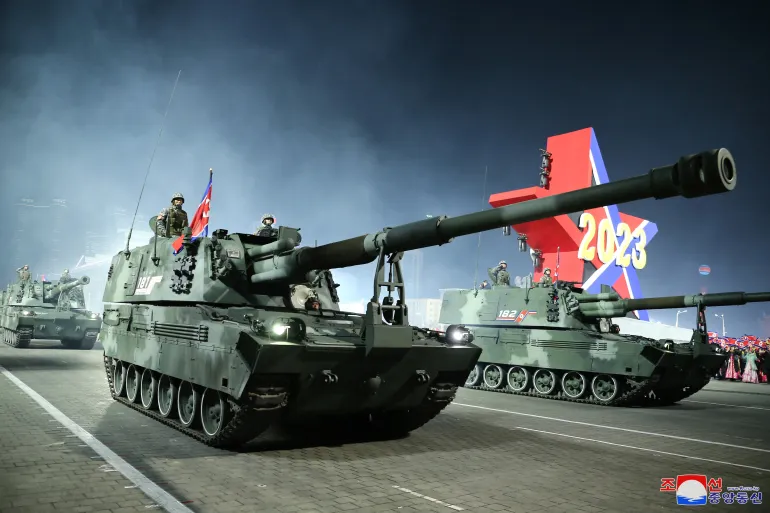Tension is brewing again after North Korea carried out an artillery barrage near two South Korean border islands, as confirmed by Seoul’s defence ministry on Saturday morning.
Africa Today News, New York gathered that the incident prompted the South’s military to conduct a live-fire drill in response.
One of the worst military escalations on the peninsula since North Korea’s shell strike on one of the islands in 2010 occurred when residents of the two islands were told to evacuate to shelters and ferry services were suspended.
According to a formal statement from the Korean Central News Agency, the North Korean military justified the live-fire exercise by citing a “natural countermeasure” against purported South Korean threats.
The de facto sea border between the two countries is located south of Yeonpyeong and Baengnyeong, two thinly populated islands. Seoul’s defence ministry said that more than 200 artillery shell rounds were fired near these islands.
The shells landed within a buffer zone established under a 2018 tension-reducing agreement, which collapsed in November after the North launched a spy satellite.
Seoul’s defence minister Shin Won-sik condemned the action, labelling the resumption of artillery fire in the buffer zone as “provocative” and escalating tensions on the Korean Peninsula.
Read Also: How Russia Used North Korean Missiles In Ukraine, US Claims
In response, Seoul’s military expressed intentions for immediate, robust retaliation, emphasising the need to maintain peace with robust force.
North Korea’s military warned against provocation and pledged significant counteraction, stressing that the shells fired had no effect on Baengnyeong and Yeonpyeong islands.
China, a significant ally of Pyongyang, urged restraint from all sides, while the United States urged North Korea to end its destabilising actions and resume diplomatic discussions.
Residents of the islands were ordered to evacuate to shelters ahead of the South Korean military drill as a precautionary measure, although the order was later lifted.
This incident follows previous tensions that led to the suspension and subsequent annulment of a 2018 military accord between the countries, heightening concerns about possible military clashes in border areas and impacting South Korea’s economy.
The 2010 clash between North and South Korea, prompted by a similar live-fire drill by the South, resulted in casualties and heightened tensions between the two countries.
Amid escalating hostilities, North Korea’s leader, Kim Jong-Un, affirmed the nation’s nuclear status and military preparedness, triggering heightened alertness in South Korea and reinforcing US military presence in the region.
Kim’s recent calls for missile launcher production come amid escalating tensions globally, with the US accusing North Korea of supporting Russia in missile attacks on Ukraine, further amplifying tensions between Pyongyang, Washington, and their respective allies.
